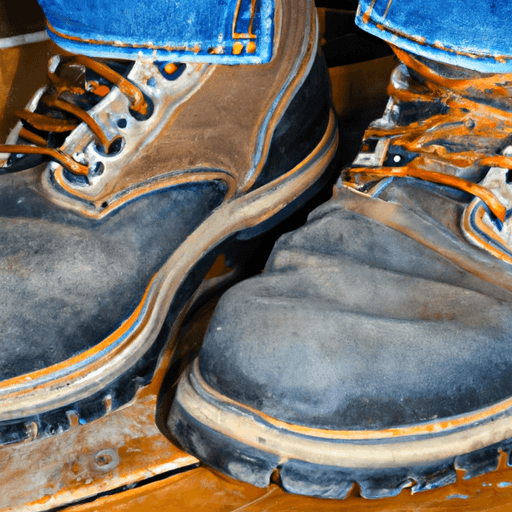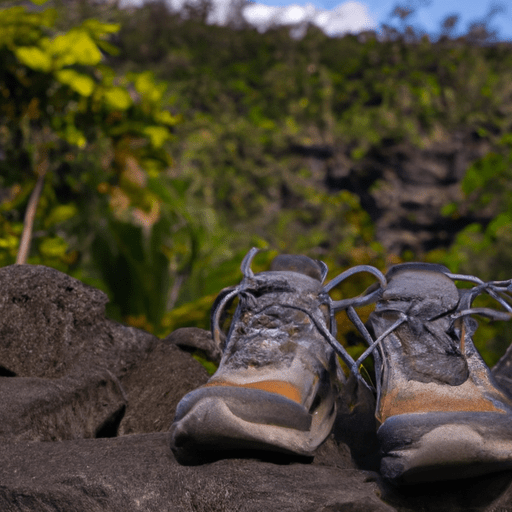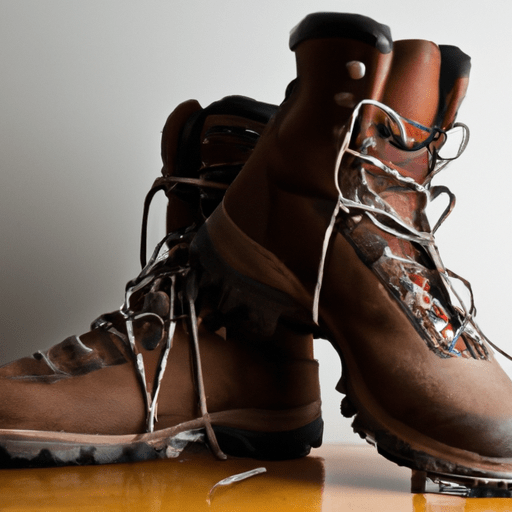Imagine yourself in the great outdoors, surrounded by breathtaking landscapes, fresh air, and the exhilarating feeling of conquering new trails. Now, picture yourself doing it all in the perfect outdoor hiking dress. This versatile and functional garment is designed to combine style with practicality, allowing you to explore nature with ease. From its moisture-wicking fabric to its built-in UV protection, this dress has got you covered, literally. Whether you’re a seasoned hiker or just starting to dip your toes into outdoor adventures, the perfect outdoor hiking dress will be your new favorite companion on the trails. Say goodbye to uncomfortable and restrictive clothing and say hello to comfort, style, and the ultimate hiking experience.
Understanding the Importance of Proper Hiking Attire
When it comes to hiking, the right attire is essential for a successful and enjoyable experience. Proper hiking attire not only provides comfort and mobility but also enhances safety on the trails. Additionally, the clothing you choose can greatly impact your overall hiking experience. By understanding the importance of proper hiking attire, you can ensure that you are well-prepared for any adventure that comes your way.
Importance of comfort and mobility in hiking
Comfort and mobility are key factors to consider when choosing hiking attire. A poorly fitting or uncomfortable outfit can make even the shortest hike feel like a daunting task. Opting for clothing that allows freedom of movement and is made from lightweight, breathable materials will greatly enhance your comfort on the trails. It is important to consider the fit of your hiking attire to ensure that it doesn’t restrict your movement and allows you to navigate different terrains with ease.
How the right clothing enhances safety
Proper hiking attire plays a crucial role in ensuring your safety while exploring the great outdoors. Investing in high-quality clothing that is designed specifically for hiking can protect you from potential hazards on the trail. For example, selecting pants or shorts that are durable and abrasion-resistant can help prevent injuries from scrapes or cuts. Additionally, wearing moisture-wicking materials can keep you dry and prevent hypothermia in wet conditions. The right clothing can also protect you from the sun’s harmful rays, reducing the risk of sunburn and heat-related illnesses.
Impact of clothing on overall hiking experience
The clothing you choose to wear while hiking can greatly impact your overall experience. Wearing the appropriate attire will allow you to focus on the scenery and enjoy the journey rather than being distracted by discomfort or inadequate protection. By selecting the right clothing for the weather conditions and intensity of the hike, you can maximize your enjoyment and ensure a memorable hiking experience.
Factors to Consider When Choosing Hiking Attire
Choosing the right hiking attire involves considering various factors that can greatly affect your comfort and safety on the trails. By taking the following factors into account, you can select the most suitable clothing for your hiking adventures.
The forecasted weather conditions
One of the primary factors to consider when choosing hiking attire is the forecasted weather conditions. Different weather conditions require different types of clothing to ensure appropriate protection and comfort. For hot and sunny weather, lightweight and breathable fabrics with UPF (Ultraviolet Protection Factor) ratings are essential to shield your skin from the sun’s harmful rays. In cold or wet conditions, layering becomes crucial to regulate body temperature and stay dry. Understanding the weather conditions will guide your clothing choices and help you prepare adequately for your hike.
The anticipated intensity of the hike
The intensity of the hike should also be taken into account when selecting hiking attire. For more strenuous hikes that involve steep inclines or rocky terrains, choosing clothing that provides ample flexibility and durability is key. Pants or shorts with added reinforcement in high-wear areas, such as knees and seat, can protect against abrasions and increase the longevity of your hiking attire. Additionally, breathable fabrics will aid in moisture management and prevent overheating during intense physical activity.
The duration of the hiking trip
Consider the duration of your hiking trip when selecting appropriate attire. For shorter hikes, you may opt for lighter clothing and carry a smaller backpack, while longer hikes may require more layers and additional accessories. The duration of your trip will also impact your clothing choices in terms of comfort and versatility. It is important to strike a balance between packing light and ensuring that you have enough clothing to stay comfortable and protected throughout your journey.
Personal style preferences and comfort
While functionality and practicality should take precedence when choosing hiking attire, personal style preferences and comfort should not be overlooked. Feeling good in what you wear can contribute to your overall hiking experience. Look for clothing that not only meets your performance requirements but also aligns with your personal style. Experimenting with different brands and styles will help you find the perfect balance between fashion and function, ensuring you feel confident and comfortable during your hikes.

Essential Elements of a Hiking Outfit
Creating the perfect hiking outfit involves carefully selecting essential elements that work together to provide comfort, protection, and versatility. By considering the following elements, you can assemble a functional and stylish hiking ensemble.
Layering basics for hiking
Layering is essential for regulating body temperature and adapting to changing weather conditions while hiking. A typical layering system consists of a base layer, mid-layer, and outer layer. The base layer is in direct contact with your skin and should be made of moisture-wicking materials that keep you dry. The mid-layer provides insulation and warmth, while the outer layer acts as a protective barrier against wind, rain, and snow. Opt for lightweight, breathable fabrics that allow for easy layering and removal as needed.
Gaining versatility through mix and match pieces
To maximize versatility, opt for mix and match pieces that can be combined to create different outfits suitable for varying weather conditions and hiking intensities. Having a few base layers and mid-layers that can be easily interchanged will allow you to adapt to different temperatures without carrying excess clothing. Look for pieces that are lightweight and packable, making it convenient to adjust your layers on the go.
Considering material and fabric choices
Choosing the right material and fabric is crucial when it comes to hiking attire. Lightweight, breathable, and moisture-wicking fabrics, such as merino wool or synthetic blends, are popular choices for base layers. These materials help regulate body temperature by wicking sweat away from the skin, keeping you dry and comfortable. When it comes to outer layers, look for waterproof and windproof options that provide adequate protection against the elements. Consider the durability and ease of care for each fabric to ensure longevity and convenience.
The Role of Moisture-Wicking Materials
Moisture-wicking materials play a significant role in hiking attire as they help keep you dry and comfortable throughout your hike. Understanding the benefits of wearing moisture-wicking materials, familiarizing yourself with suitable fabrics, and finding the right balance between moisture-wicking and insulation properties will greatly enhance your hiking experience.
Benefits of wearing moisture-wicking materials
Moisture-wicking materials effectively manage sweat and moisture by pulling it away from your skin to the outer layers of clothing, where it can evaporate more easily. This keeps you dry and prevents the accumulation of sweat that can lead to discomfort, chafing, and potential skin irritations. By wearing moisture-wicking materials, you can stay cooler in hot weather and avoid hypothermia in cold, wet conditions. Additionally, these fabrics dry quickly, making them ideal for multi-day hikes where laundry facilities may not be readily available.
Examples of moisture-wicking fabrics suitable for hiking
There are several moisture-wicking fabrics commonly used in hiking attire. Merino wool is a natural fiber that is highly effective at wicking away moisture and regulating body temperature. It has excellent odor-resistant properties, making it a popular choice for base layers. Synthetic materials, such as polyester and nylon blends, are also widely used for their moisture-wicking capabilities, durability, and quick-drying properties. These fabrics are often found in mid-layers and outer layers.
Balancing moisture-wicking and insulation properties
While moisture-wicking properties are essential for hiking attire, it is important to find a balance between moisture management and insulation. For colder weather or higher altitudes, you may require additional insulation to retain body heat. Layering with a combination of moisture-wicking and insulating materials can help you maintain a comfortable body temperature. By choosing moisture-wicking base layers and insulating mid-layers or jackets, you can ensure that you stay dry and warm throughout your hike.

The Importance of Sun Protection in Hiking Attire
Protecting yourself from the sun’s harmful rays is crucial when spending extended periods outdoors. With the right sun protection in your hiking attire, you can minimize your risk of sunburn and long-term skin damage. Understanding UPF-rated clothing, choosing the right hat, and incorporating sunglasses into your hiking outfit are essential for effective sun protection.
Understanding UPF-rated clothing
UPF (Ultraviolet Protection Factor) ratings indicate the level of sun protection a fabric provides. The higher the UPF rating, the more protection the fabric offers against harmful UV rays. Look for clothing with a UPF rating of 30 or higher, which blocks most of the sun’s UV radiation. UPF-rated clothing is specifically designed to shield your skin from the sun, providing an extra layer of defense beyond sunscreen.
Choosing the right hat for sun protection
A wide-brimmed hat is an excellent addition to your hiking attire for sun protection. Look for hats with a brim that extends all the way around to shield your face, neck, and ears from direct sunlight. Hats made from breathable and moisture-wicking materials will help keep your head cool and comfortable throughout your hike. Don’t forget to secure your hat properly, especially on windy days, to ensure it stays in place.
The role of sunglasses in a hiking outfit
Sunglasses are not just a fashion accessory; they are an essential part of your hiking attire for proper eye protection. Exposure to intense sunlight, especially at higher altitudes, can damage your eyes and contribute to long-term vision problems. Invest in a good pair of sunglasses that offer 100% UV protection and are designed to withstand outdoor activities. Look for sunglasses with a wraparound design to provide optimal coverage and prevent sunlight from entering through the sides.
Choosing the Right Hiking Pants and Shorts
Selecting the appropriate hiking pants or shorts is crucial for both comfort and protection while on the trails. Understanding the pros and cons of pants versus shorts, identifying key features to look for, and determining the right size and fit will help you make an informed decision.
The pros and cons of pants versus shorts
Deciding between hiking pants or shorts depends on various factors such as weather conditions, terrain, and personal preferences. Pants provide more coverage and protection against insects, sunburn, and brush scrapes, making them a better choice for longer hikes or when navigating through dense vegetation. Shorts, on the other hand, offer better ventilation and freedom of movement, making them suitable for warmer weather or less challenging terrains. Consider the specific demands of your hike and choose whichever option aligns with your comfort and needs.
Key features to look for in hiking pants or shorts
Regardless of whether you choose pants or shorts, there are certain key features to look for when selecting hiking attire for your lower body. Look for pants or shorts with multiple pockets for convenient storage of essentials like a compass, trail map, snacks, or a pocket knife. Reinforced knees, seat, and hems provide extra durability, especially if you expect to encounter rough or rocky terrains. Adjustable waistbands, articulated knees, and gusseted crotches are additional features that enhance comfort and mobility during your hike.
How to choose the right size and fit
Choosing the right size and fit is crucial for comfort and functionality in hiking pants or shorts. Sizes can vary between brands, so it is important to consult the size chart provided by the manufacturer and measure yourself accordingly. Consider the type of layers you plan to wear underneath and leave enough room for ease of movement without the clothing being too baggy or restricting. Don’t forget to check the height and length options available, especially if you are taller or shorter than average, to ensure proper coverage and fit.
Selecting Appropriate Hiking Shirts and Jackets
Hiking shirts and jackets are essential components of your hiking attire, offering protection and comfort in various weather conditions. Whether choosing between short-sleeved and long-sleeved shirts, understanding the role of jackets, or identifying important features, selecting the right upper-body clothing is vital for a successful hiking experience.
Choosing between short-sleeved and long-sleeved shirts
When it comes to hiking shirts, choosing between short-sleeved and long-sleeved options depends on the weather, sun exposure, and personal preferences. Short-sleeved shirts are suitable for warmer weather, providing better ventilation and preventing overheating during physical activity. Long-sleeved shirts, on the other hand, offer added sun protection and can be layered for extra warmth when needed. Opt for shirts made from lightweight and breathable fabrics that offer UPF protection for optimal comfort and sun shielding.
The role of a jacket in your hiking outfit
A jacket is a crucial piece of hiking attire, providing protection against wind, rain, and fluctuating temperatures. It acts as a final layer of defense against the elements and is essential for maintaining the balance between comfort and safety. Look for hiking jackets that are waterproof, windproof, and breathable to ensure that you stay dry and comfortable during unexpected weather changes. Consider the weight and packability of the jacket, especially for longer hikes, to ensure it can be easily stored in your backpack when not needed.
Features to look for in a hiking jacket
When selecting a hiking jacket, certain features can greatly enhance its functionality. Look for jackets with adjustable hoods, cuffs, and hemlines to customize the fit and prevent wind or rain from entering. Ventilation options, such as zippered underarm vents, allow for easy temperature regulation during strenuous activities. Pockets with waterproof zippers provide safe storage for small valuables or essentials. Additionally, consider the jacket’s weight and insulation properties to ensure it suits the specific weather conditions and intensity of your hikes.
Footwear Selection for Hiking
Proper footwear is vital for any hiking adventure, as it provides stability, support, and protection for your feet. Understanding the difference between hiking boots and hiking shoes, considering sock selection, and evaluating important factors when choosing hiking footwear will help keep your feet comfortable and injury-free on the trails.
Differentiating between hiking boots and hiking shoes
Hiking boots and hiking shoes serve different purposes and are designed for varying terrain and hiking intensities. Hiking boots, characterized by their high ankle support, are suitable for more challenging terrains, long-distance hikes, or carrying heavy backpacks. They provide excellent stability, protection, and waterproofing for rough trails or uneven surfaces. Hiking shoes, on the other hand, offer lighter weight and more flexibility, making them ideal for day hikes, well-maintained trails, or those who prefer minimalistic footwear. Choose the option that aligns with your hiking preferences and the specific demands of your adventures.
The importance of sock selection
Finding the right socks is just as important as selecting the right footwear for hiking. Socks act as a cushioning layer between your feet and the shoes, preventing blisters, hot spots, and discomfort. Look for hiking-specific socks made from moisture-wicking materials, such as merino wool or synthetic blends, to keep your feet dry and help prevent odors. Consider the thickness and cushioning level of the socks based on your personal preferences and the intensity of your hikes. It is also important to wear properly fitting socks that prevent bunching or sliding, reducing the risk of friction and blisters.
Considerations for selecting hiking footwear
When selecting hiking footwear, consider several factors to ensure the best fit and functionality. Look for shoes or boots with a solid grip to provide traction on slippery or uneven terrain. Waterproof or water-resistant options are essential if you anticipate encountering wet conditions during your hikes. Pay attention to the toe box, ensuring it provides enough room for your toes to move freely without feeling cramped or restricted. Consider trying on footwear later in the day when your feet may be slightly swollen to ensure a more accurate fit.
Accessorizing Your Hiking Outfit
Accessorizing your hiking outfit with the right gear can enhance your overall hiking experience and provide additional protection and convenience on the trails. Consider selecting gloves, the right backpack, and additional accessories like neck gaiters, bandanas, or scarves to complement your hiking attire.
Selecting gloves for hiking
Choosing the right pair of hiking gloves is essential for protecting your hands and ensuring dexterity while on the trails. Look for gloves that provide a balance between warmth and functionality. For colder weather, consider insulated gloves that offer additional heat retention, while lightweight and breathable gloves are suitable for warmer hikes. It is important to choose gloves that allow for easy finger movement and grip, particularly if you plan on engaging in activities such as climbing or using trekking poles.
Picking the right backpack for your hiking outfit
A well-fitted and appropriate backpack is crucial for comfortably carrying your hiking essentials. Consider the size and capacity of the backpack based on the length of your hikes and the amount of gear you need to carry. Look for backpacks with adjustable straps, padded hip belts, and ventilated back panels to ensure proper weight distribution and comfort. It is essential to try on different backpacks and adjust them to your specific measurements to find the most comfortable fit.
Choosing additional accessories like neck gaiters, bandanas, and scarves
Additional accessories like neck gaiters, bandanas, and scarves can provide additional protection and versatility to your hiking attire. Neck gaiters can be worn as a lightweight layer around your neck to shield from wind, sun, or insects. Bandanas can serve multiple purposes, from wiping sweat to providing temporary shade. Scarves made from moisture-wicking materials can protect your face and neck from the elements. These accessories are lightweight, easily packable, and can be used in various ways to suit your specific needs during the hike.
Maintaining and Caring for Your Hiking Attire
Taking proper care of your hiking attire is necessary to extend its lifespan and ensure optimal performance. Regular cleaning practices, proper storage, and knowing when to retire old hiking clothes are essential for maintaining the quality and functionality of your gear.
Regular cleaning practices for hiking clothes
Regularly cleaning your hiking clothes is crucial for maintaining their performance and prolonging their lifespan. Follow the manufacturer’s instructions for washing and drying to ensure you do not damage the fabric or compromise its functionality. Setting aside dedicated time after each hike to clean your clothes will prevent dirt, sweat, and odors from accumulating and potentially impacting the fabric’s breathability and moisture-wicking properties. Using gentle, fragrance-free detergents and avoiding fabric softeners will help preserve the integrity of the materials.
Proper storage of hiking attire
Properly storing your hiking attire when not in use will help prevent damage and maintain its quality over time. Ensure that your hiking clothes are clean and dry before storing them to prevent the growth of mold or unpleasant odors. Ideally, hang or fold your clothes in a cool, dry place away from direct sunlight, as excessive exposure to light or heat can degrade certain fabrics. Avoid placing heavy objects on top of your gear to prevent compression or distortion. Storing your hiking attire in a designated gear closet or a breathable storage bag will help protect it from dust, pests, and potential damage.
When and how to retire old hiking clothes
As much as we may love our hiking clothes, there comes a time when they need to be retired. Signs of wear and tear, such as significant fading, fabric thinning, or seam damage, indicate that it may be time to replace your gear. Inspect your hiking attire regularly and assess its condition to ensure it continues to provide the necessary protection and performance. When retiring old hiking clothes, consider donating them if they are still in usable condition or repurposing them for other outdoor activities. Properly disposing of damaged or unsalvageable gear is essential to reduce our environmental impact.
In conclusion, understanding the importance of proper hiking attire is key to having a safe and enjoyable hiking experience. Comfort and mobility should be prioritized when selecting hiking clothes, with consideration given to the forecasted weather conditions, anticipated hiking intensity, and duration of the trip. Layering basics, moisture-wicking materials, sun protection, and appropriate footwear are all essential elements of a hiking outfit. Accessorizing with gloves, a backpack, and additional accessories enhances functionality. Taking care of your hiking attire through regular cleaning, proper storage, and knowing when to retire old gear will ensure that it lasts for many adventures to come. So, gear up with the right hiking attire and embark on your next outdoor escapade with confidence. Happy hiking!







